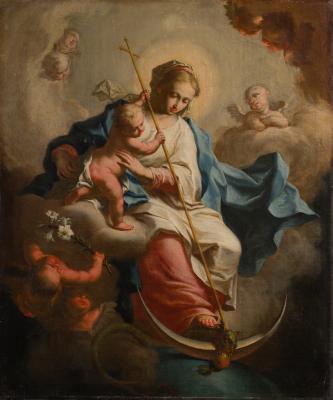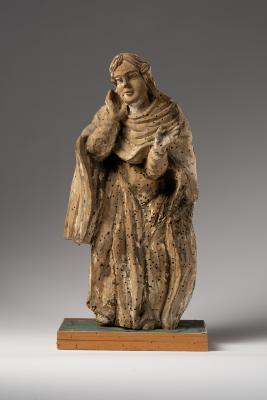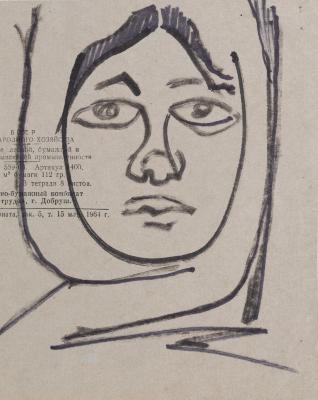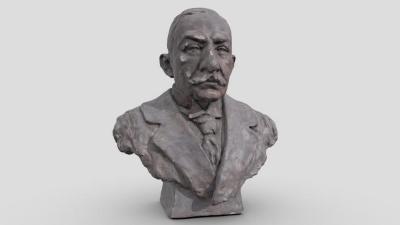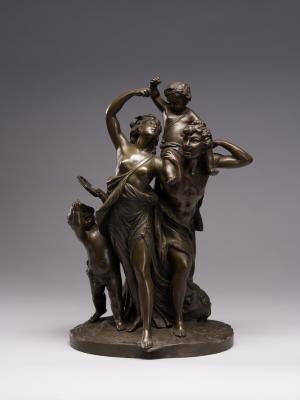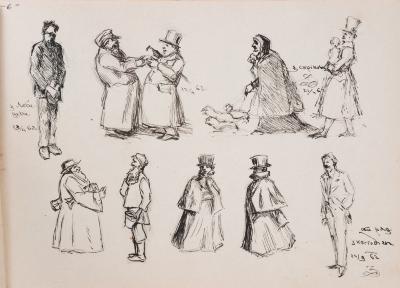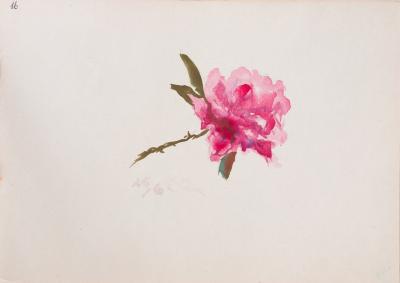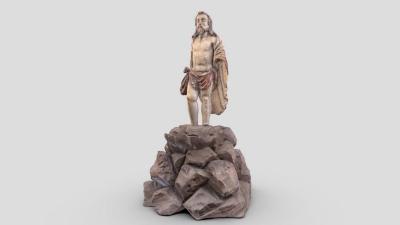The first version of the engraving is unknown. The Lviv version might be dated 1816. The work is from the Neapolitan series. Like in many other compositions depicting the sellers of Naples, the scene takes place in the same square next to the temple. It might be the Basilica di Santa Maria della Sanità located north of the city centre in the Sanita neighbourhoods. From that perspective, one can see Vesuvius in the distance on the right. In the centre of the composition, in the foreground, a young salesman is talking to a boy, raising his hand with a horn and pointing to a table with a large bag of pastries. The girl, a sales assistant, is forming the pastries into a zeppola cookie. The artist highlights the light and ordinary clothes of the Neapolitan common people with bright watercolours, namely the red vests of a young salesman and a boy, their blue and yellow knee-length trousers, and a girl's long pink skirt with a blue apron. Like the young boy, the young seller is standing barefoot on the sun-baked stone terrace; on his head is a black hat decorated with a flower. The girl's hair is tied with a white headscarf; sandals are on her feet. Buildings and the sky with Vesuvius serve as the background of the composition; they are depicted in blurred ochre and pink colours and light blue tones. Rione Sanità (Health Neighbourhood) is a densely populated neighbourhood in the Stella district north of Naples' downtown. Nowadays, it is full of small street markets where food and clothing are sold; there are also ice cream shops and simple trattorias.
Zeppola is a traditional Neapolitan pastry; round pancakes are topped with cream or honey.









